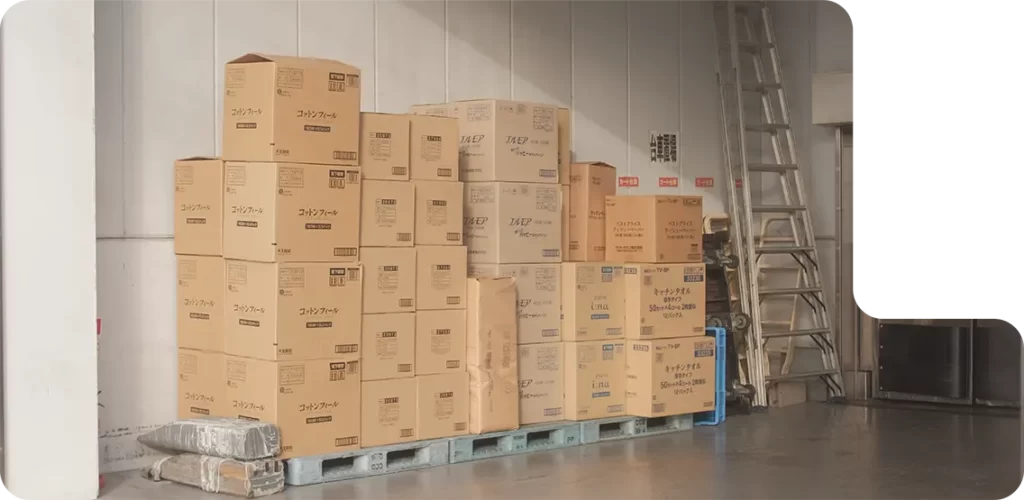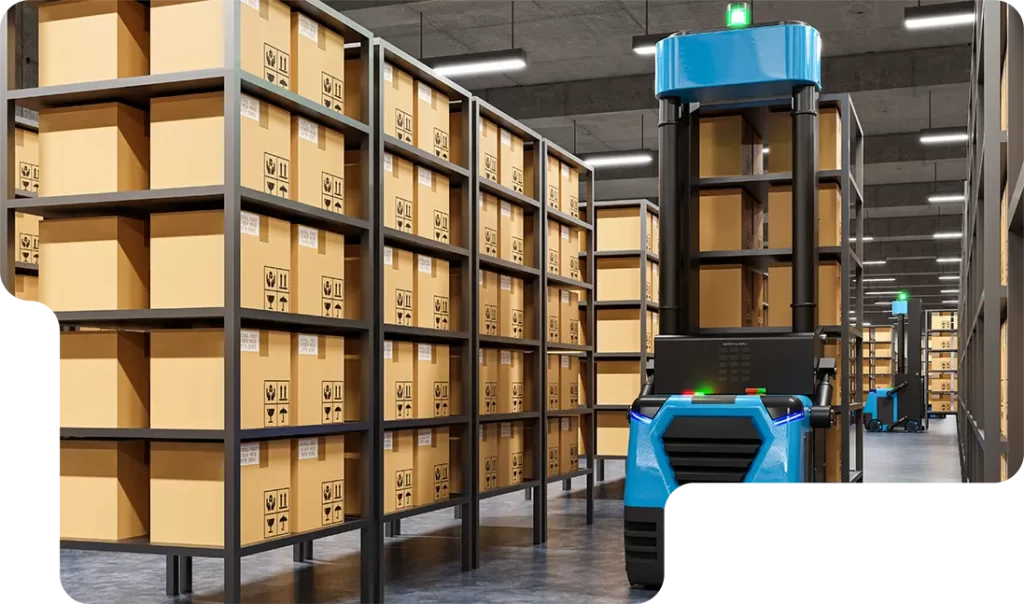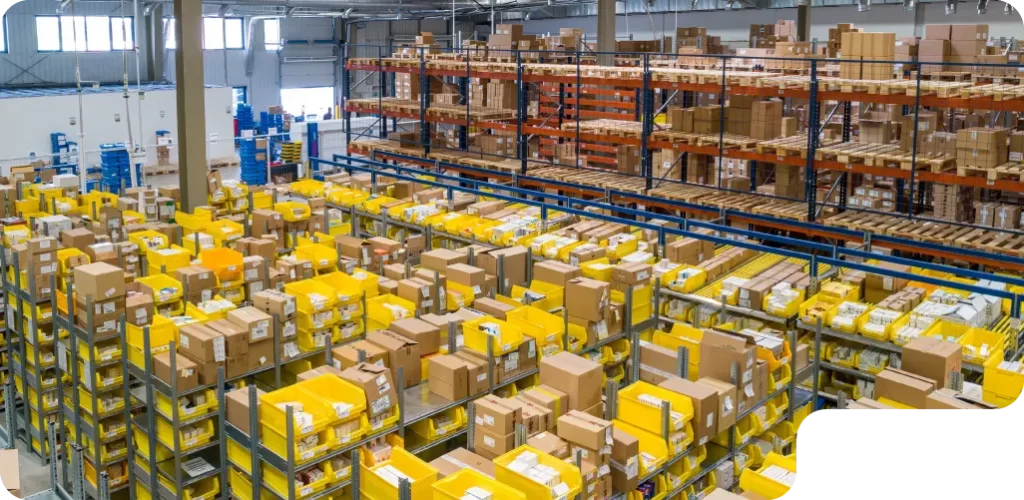Table of Contents
More Inventory Content
Subscribe to get the latest news!
Table of Contents
More Inventory Content
Share this
Subscribe to get the latest news!
Table of Contents
Share This
More Inventory Content
Subscribe to get the latest news!
What is Inventory Management?
We define inventory management by focusing on inventory first. Inventory is one of the most valuable assets for a business. Inventory management is a vital feature in business sectors like retail manufacturing and other services where the merchandise is the core of the operation.
Hence, the process of ordering, storing, and selling those store products is called inventory management. This covers a vast area, including managing raw materials, finished products, and other warehousing evaluations. The inventory management process strives to streamline converting raw materials to finished products and selling them efficiently.

Inventory Management Vs Inventory Control
Inventory management entails forecasting and replenishing the inventory as and when required by reviewing the raw materials and finished goods in the warehouse. These activities focus on when to order the inventory, from whom to order, and how much to order. On the other hand, inventory control refers to regulating the inventory level in the warehouse depending upon the processing and selling of the products.
The scope of inventory management is broader, including checking to forecast and replenishing the inventory level where good and effective relations with the suppliers are to be maintained. The scope of inventory control is smaller and only focuses on regulating and checking inventory levels.
The primary purpose of inventory management is to see the items’ demand and supply levels and maintain good external relations. The central goal of inventory control is to see how many products need to be stocked and whether these products are in a condition to use.
Therefore, these are the critical differences between inventory management and inventory control.

Inventory VS Stock
Inventory summary includes the finished goods and other components deemed essential to make the finished goods, such as raw materials, equipment, etc.
On the other hand, the stock is the supply of only finished products available for sale in the market.
The differences between inventory and stock are as follows:
- Inventory refers to the raw materials, equipment, and other valuable products required to make the finished goods. Whereas stock refers only to the finished goods that can be sold in the market.
- Inventory helps you estimate the sale price of the products. At the same time, stock enables you to understand the business revenue to achieve.
- The inventory needs to be updated at a slower pace that can vary from a quarterly to a half-yearly basis. On the other hand, stock needs to be updated daily.
- The term inventory includes both manufacturing and retailing of the items. In contrast, the term stock is more common at the time of production and manufacturing of the items.
- The inventory value is calculated using various methods, but the stock calculation is relatively easy as it is based on the item’s current market value.

Why is Inventory Management Important?
Inventory management is integral to any business, mainly when focused on manufacturing and retail. Inventory management is essential because:
Saves Money
Inventory management keeps track of how much stock there is of what products, which helps you understand how much you need to have in your warehouse. So there is no overload of inventory that goes unsold when the item becomes obsolete or is in less demand.
Improves Cash Flow
When you manage inventory better, it always results in an increased cash flow in the business. It helps you stop the stock in your warehouse that sells rapidly, making it easy to have cash flow in the business.
Enhanced Customer Satisfaction
Better inventory management also results in enhanced customer satisfaction, earned when customers receive their desired products with less waiting time.
Increases Market Share
Effective inventory management makes you rise high in the business circle and increases the market share, which benefits you in the long run.

Benefits of Inventory Management
Accurate inventory management is a fundamental feature of running any business. It helps you understand the stock properly and also guides you to maintain good external relations with the suppliers. The main goal of inventory management is to attain accuracy and growth in business, which is a benefit in itself.
Among the substantial benefits of inventory management are:
Accuracy In Inventory
With an accurate inventory management system, you know what is in stock and what to amount in how much quantity to meet the exact demand.
Cost Savings
Preparing a formal inventory report informs you about the cost you need to cut down on various processes and the cost that is saved, resulting in cost savings.
Avoiding Excess Stock
Excess stock in the warehouse runs the risk of getting damaged. Hence, warehouse inventory management also includes seeing whether an excess stock is available.
Better Relations With Suppliers And Vendors
Inventory management gives you an insight into the relations you have to maintain with the suppliers to benefit your business. So it helps you understand and negotiate the cost of the supplies with the vendors.
Increase In Productivity And Profitability
Suppose you understand the demand and supply availability of inventory correctly. In that case, it results in more profitability, and the efficiency in productivity helps you save time to invest in other management activities. Also, the inclusion of online inventory management is a boon in disguise.

Inventory Management Challenges
As inventory management is complex, it is also riddled with challenges. Analyzing these will help you better understand how to improve inventory management. The challenges with managing inventory are:
Difficulty In Identification Of Inventory
It is difficult to identify and locate the inventory in a large warehouse. A hard-to-find inventory impacts the search time of stock in the warehouse and delays order shipment, resulting in a bad reputation for your business.
Inefficient Inventory Management Process
It is impossible to manage a large inventory just based on manual paper-based procedures, so implementing online inventory management makes it more efficient and helps retain accurate inventory reports.
Tracking Obsolete Inventory
It is unlikely that all inventory will be sold, and as a result, some will become obsolete and need to be discarded. However, tracking is often not correctly done, and new items get thrown away, showing poor inventory management reports.
Poor Inventory Control Management
If you cannot keep up with the over-stocks in your warehouse, you cannot do the warehousing and inventory management properly. Hence it shows poor results in inventory management reports.
Inventory Manages Waste And Defects
If your inventory has a stock of defective products, it is useless and acts as waste in your inventory management methods.

Process of Inventory Management
Inventory management goes through a series of steps that, when combined, make the process of inventory management. This process has the following steps:
- The product is first delivered at your warehouse or inventory facility.
- The product goes through an inspection and gets sorted and stored with various inventory management techniques.
- The next step is monitoring the inventory levels using multiple inventory management apps and manual reviews.
- The customers make their orders by opting for either online or offline mode.
- In this step, the customer orders are approved in several ways based on your chosen inventory management technique.
- The products are from the stock, which gets packed for shipment.
- After the orders are packed and shipped, the inventory levels are checked and updated for inventory management reporting.
- Now, the stock levels are checked to keep up with the inventory scenario, so it becomes easy for the manager to deal with the management of inventory.
Therefore, these are all the steps that comprise the inventory management process

Inventory Management Techniques
Although there are a lot of inventory management techniques in the business forum, below are the most celebrated and practical techniques on how to manage warehouse inventory:
Just-In-Time (JIT) Inventory Management
The selling price of your merchandise should either be the retail price customers would pay, or the wholesale price merchants would pay in a wholesale market. Most buyers may provide a sales-by-item report based on this, which can be cross-referenced against the complete inventory description to establish a gross inventory fair value before the changes mentioned below.
Bulk Shipments
This includes the idea that buying in bulk will lower the costs of the items, and the prophets will be higher when these items will be sold in the market. This technique is used in warehouse inventory management systems.
Dropship Inventory Management
The businesses that use drop-shipping inventory management typically work with the help of outsourcing. It is considered one of the best inventory management techniques, as drop ship inventory management focuses on the medium of outsourcing.
Consignment
This technique includes giving the consignor (wholesaler) products to the consignee (retailer) without taking the payment immediately. This means that the consignor is still the owner of the goods, and the consignee pays the money back when the goods are sold. This shows how to manage inventory effectively.
ABC Inventory Management
This technique helps identify those inventories earning profits by dividing them into three categories: tier A, tier B, and tier C. This technique teaches you how to manage inventory in a relatively simple way.
Cross-Docking
This technique generally eliminates the need for inventory as the orders are placed, and the products are packed from the warehouse immediately to prep for shipment.
Omnichannel Inventory Management
Omnichannel inventory management is the technique that helps you to sell across all the platforms that your business has hands-on. It covers the online, retail walk in-store, etc., facilities where you sell your products.
Logistics Inventory Management
This technique will help you learn only inventory management strategies concerned with the logistics department. This technique is centered on one department that deals with logistics.

What is Multi-Channel Inventory Management?
A multi-channel inventory management is where businesses track and account for the orders made from various sources of sales located in multiple locations like the marketplace, retail, e-commerce inventory management system, etc. It also includes creating a consistent surface for customers where they can interact with various brands.

What are the Different Types of Inventory?
You can avoid inefficient ways customers manage their inventory and apply more competent inventory management if you know the inventory types. Four significant types of inventory are categorized below:
Raw Materials
Raw materials are items required to turn your inventory into finished products ready to sell. These bits and pieces turn your work-in-progress items into finished goods.
For example, leather can be your raw material for manufacturing belts sold in the market.
Work In Progress
As the name implies, the inventories currently being worked on are called work in progress. To make better sense, work in progress results from raw materials and some labor, which will produce finished goods.
For example, in chips selling company, the packaging is a work in progress because, without the packet, the chips can’t be sold.
Finished Goods
Finished goods are those inventory ready to be sold in the market. It is a result of raw materials plus work in progress.
For example, the packaged fruit juice that is available in the market for sale is the finished product.
MRO (Overhaul)
MRO is described as maintenance, repair, and operating supplies necessary for the inventory management system. MRO is all about the small details in the inventory. These are the helping hands of stock, such as storage or transit supplies.
For example, the gloves that the workers wear while making the finished products are MRO.
This breakdown of the types of inventory will help you understand the types of inventory management.

Inventory management formulas
Formulas are essential to calculate inventory management. Although there are many formulas for calculating inventory management, only a few are radically used and applied in the process.

Economic order quantity (EOQ) formula
The companies use the economic order quantity formula to calculate the order quantity concerning logistics cost, warehousing space costs, overstocks, stockouts, etc. This formula proves to be a massive help while managing inventory efficiency. The central purpose of this EOQ Inventory model is to determine the ideal order quantity one should have according to their business.
Below are the three factors you need to consider whenever calculating the EOQ:
- Holding costs or inventory carrying ( total cost of holding inventory)
Holding cost or inventory carrying= (Storage Costs + Employee Salaries + Opportunity Costs + Depreciation Costs) / Total Value of Annual Inventory - Annual demand (the demand the product receives each year)
- Order cost or set up cost (the cost of order per purchase)
Thus, the formula for calculating the economic order quantity (EOQ) is:
EOQ = {(2SD) / H}²
S = Setup costs (per order, generally including shipping and handling)
D = Demand rate (quantity sold per year)
H = Holding costs (per year, per unit)
Days inventory outstanding (DIO) formula
DIO measures and calculates the days a company needs to sell off the inventory they have as stock in hand. That is why all companies try to limit the days as far as possible to sell the stock in hand, so it does not have to sit long in the warehouse.
The formula for DIO is flexible and can be calculated in two ways. Thus, the Days Inventory Outstanding (DIO) formula is:
- (DIO) = (Average Inventory / Cost of Goods Sold) * 365 Days
- (DIO) = 365 Days / Inventory Turnover
Reorder Point Formula
The reorder point formula is relatively simple and gives accurate results for evaluating inventory management. However, it is based on average usage; the demand may rise or fall in reality. A company can alter the reorder formula to add a safety stock.
Thus, the reorder point formula is:
Reorder point= (Average daily usage rate x Lead time) + Safety stock

How to improve inventory management
In every company, there is a system that supervises the improvement of every department. Inventory management also needs to be improved with time; these tips will help you do that in the long run. Here are some inventory management best practices you can incorporate to improve your process:
- You may ask for help from the suppliers as supplier assistance is an excellent feature to refine.
- You may hire inventory control personnel who will supervise the inventory management.
- Try as much as you can to monitor the inventory levels.
- Try using the technique of barcode inventory management for accuracy.
- The incorporation of customer delivery is another practical aspect in this regard.
- The use of automated inventory management can be a good solution too.
- Install an inventory tracking system.
- Purchase inventory management software to customize the databases.
Got any queries on inventory management? Let us know in the comment section below!
Sign up today and LEAVE THE LOGISTICS TO US
Sign up, and we will get back to you within 24 hours to discuss what services would be best for your business needs. Or speak with us now and tell us what you need.
FAQs
Inventories are broadly categorized into four types as follows:
- Raw materials
- Work in progress
- Finished goods
- MRO
The first step in inventory management is looking at the customer demand trends and forecasting based on the data.
The five essential elements of inventory management are:
- Track activity
- Daily counts
- Manage out-of-stock products
- Clear description
- Organized work environment
The primary purpose of inventory management is to ensure enough stock is available to meet customer demands while avoiding overstock or understock.
Five major objectives of inventory management are as follows:
- Availability of material.
- Betterment in the level of customer satisfaction.
- Cost-effective storage facility.
- Availability of sufficient stock.
- Diminishing wastages and losses.